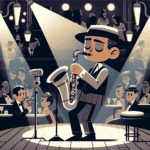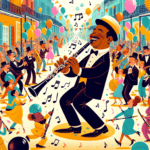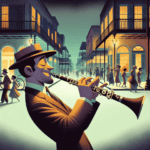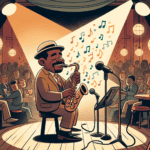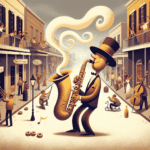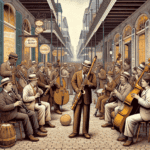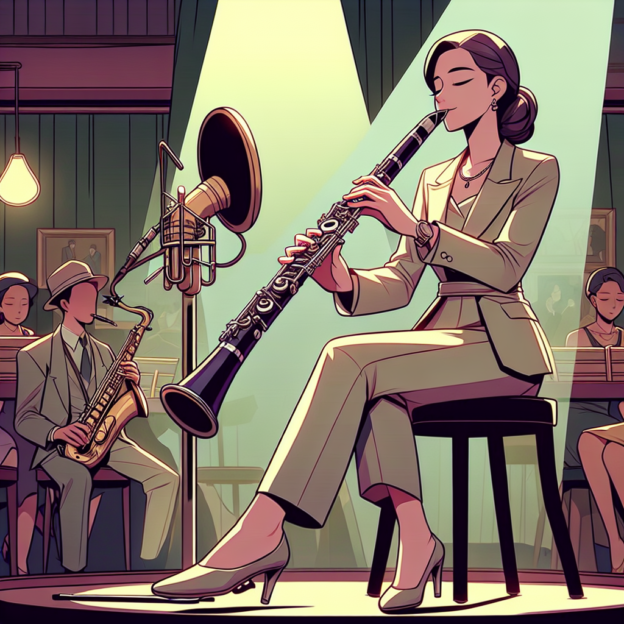Have you ever wondered about the clarinet's role in jazz education? This instrument has left an incredible mark on jazz—its soulful tones can move an audience to tears, while its lively melodies get feet tapping! It's amazing to see how the clarinet has found its place in both classrooms and jazz bands.
The clarinet made its jazz debut in the early 20th century, especially in New Orleans. Pioneering musicians like Sidney Bechet mixed traditional styles with fresh jazz techniques. These early jazz artists, with their energetic rhythms and improvisation, set the stage for future clarinetists. The clarinet's knack for expressing a wide range of emotions cemented its place in jazz education, where learning to convey feelings through music is key.
The Evolution of Clarinet in Jazz
As time passed, the clarinet's role in jazz shifted. While it remained important, it took on a new character with musicians like Benny Goodman. Known as the King of Swing, Goodman put the clarinet in the spotlight in jazz bands. His skillful playing inspired many and raised the bar for clarinetists. Interestingly, Goodman also played a part in breaking down racial barriers in the music industry. By hiring diverse musicians, he helped expand the scope of jazz education and performance.
During this time, Martin Freres emerged as a prominent clarinet maker. Their instruments became popular among teachers due to their smooth sound and precise tuning. These qualities made Martin Freres clarinets perfect for students learning to play jazz tunes.
| Era | Key Figure | Contribution |
|---|---|---|
| Early 20th Century | Sidney Bechet | Blended traditional styles with new jazz techniques |
| Swing Era | Benny Goodman | Brought clarinet to the forefront, broke racial barriers |
| Mid 20th Century | Martin Freres | Crafted high-quality clarinets for education |
Jazz Education and the Clarinet
Schools soon saw the need to teach jazz alongside classical music. As music programs grew more comprehensive, the clarinet's ability to improvise became essential. Teachers began creating lessons that focused on more than just playing notes—they covered jazz theory, chord progressions, and improvisation techniques.
Now, let's talk about those teaching methods! Jazz education puts a lot of emphasis on training the ear. Clarinetists are taught to learn pieces by listening and copying, instead of just reading sheet music. This method sparks creativity and helps students develop their own style. Workshops and jam sessions are key, giving students a chance to play with others in a friendly setting—everyone has something valuable to add!
Modern Jazz Education
These days, the clarinet is still going strong in jazz education. Many school bands have clarinet sections, letting students try out different musical styles. This variety not only makes the students' experience richer but also deepens their understanding and love for jazz. Becoming a well-rounded musician is the aim, and clarinetists play a big part in reaching that goal.
Technology has also improved the learning experience. Online lessons and virtual masterclasses let budding clarinetists learn from talented musicians all over the world. They can pick up new techniques, sounds, and styles they might not have found otherwise.
But don't forget how important mentors are in this growth. Skilled clarinetists often become teachers, passing on what they know to younger players. This creates a rich exchange of ideas and learning, further strengthening the clarinet's place in jazz education.
The Clarinet's Lasting Legacy
As clarinetists explore jazz education, they carry on the spirit of those who played before them. Instruments from well-known makers like Martin Freres represent tradition while opening doors to new musical possibilities. The clarinet in jazz is more than just an instrument; it's a link connecting musicians of the past, present, and future.
Looking back on the history of the clarinet in jazz education, we see it's more than just a thing or a set of skills taught in class. It's about passion, expression, and community. So why not pick up your clarinet, join a local jazz group, or start a jam session? The exciting world of jazz is waiting for you!

